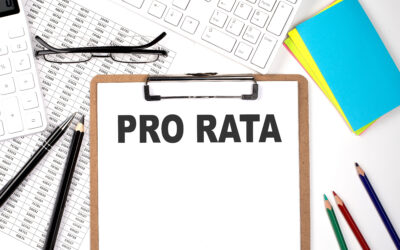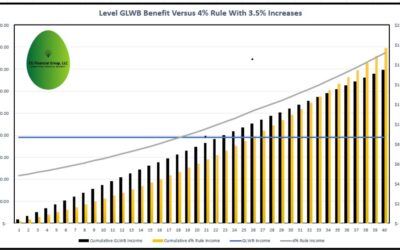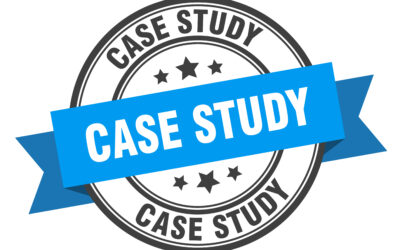A client of mine calls me up and says, “my CPA says (oh boy, here we go) that I should have gotten a 1099R for my direct rollover that we did into my SEP IRA.” I said, “it wasn’t a rollover, it was a direct transfer which does not generate 1099Rs.” He said, “You are wrong, my CPA said that direct rollovers and direct transfers are the same and both are reportable to the IRS.” I said, “Your CPA is incorrect. Direct Rollovers are reportable but direct transfers are not.” A week later he came back and said, “My CPA says you are correct.”
If the above paragraph makes your head hurt, or the more likely scenario where you are questioning if my information is correct, you are not alone. Veterans in the business and even insurance carriers on their forms do not fully understand that there are differences between indirect rollovers, direct rollovers, and direct transfers. Differentiating between “direct” and “indirect” is fairly easy. However, the difference between “direct rollovers” and “direct transfers” is a little more nuanced. However, as my first paragraph demonstrates, it would behoove all of us to take a quick review of these concepts that many folks “think” they understand. There are differences in tax withholding, tax reporting, and logistics. So, below let’s discuss four different ways that consumers can “relocate” their money without a tax liability.
Non-Qualified Money (Non-IRA, Non-401k, etc.):
1035 Exchange: A lot like how “Section 1031” in the internal revenue code allows you to avoid capital gains taxes on business property, “Section 1035” in the internal revenue code allows you to avoid income taxation on annuities and life insurance. 1035 Exchanges are for NON-QUALIFIED annuities and life insurance that have had the taxes on the growth “deferred” whereas if you were to just cash out the policy, Uncle Sam will ask for income taxes on the growth. Again, that is only if your surrender value is higher than your cost basis.
However, what happens if you want to move your money from one product to another? Would there be taxes due on the gain? Not if you “1035 Exchange” that non-qualified money to another annuity or life policy. The cost basis moves over and so does the deferred gain, at least until you decide to completely cash out the money and take “constructive receipt”. Life insurance and annuities can be “1035’d” to annuities. But only life insurance can be 1035’d to a life policy. YOU CANNOT 1035 ANNUITIES TO LIFE POLICIES. Imagine if you could 1035 a highly appreciated annuity to a life insurance policy that uses life insurance “leverage” that is tax-free!!! That would be fabulous. Uncle Sam does not allow this.
Uncle Sam does however allow for the appreciated annuity or life policy to be “1035’d” into a hybrid annuity/LTC policy. So, with this concept you can potentially get long-term care leverage that is tax-free while never paying taxes on the growth that has been “deferred”!!! The Pension Protection Act opened up this option for us.
Qualified Money, Including IRAs:
Like how we use 1035 exchanges to avoid paying taxes on the gain in the annuity or life policy, we may have “qualified money” that we want to move without paying taxes on it. Afterall, if all of the money is “pre-tax”, as it usually is with Traditional IRAs, at some point you have to pay taxes on the entire dollar amount. So how do we “relocate” qualified money that is eventually subject to taxation? This is where Rollovers (indirect and direct) and Direct Transfers come in.
Indirect Rollover: This is when a check is sent from the retirement plan or IRA and made out to the owner. In this case, the owner can deposit that money in his/her bank, but that owner has 60 days to deposit it into another plan or IRA. For indirect rollovers coming from an employer sponsored plan such as a 401(k), there is generally a 20% mandatory withholding. If the owner does not make up for that 20% withholding when they move the money to their new custodian within 60 days, that 20% is treated as if it has been withdrawn. Thus, if the person is under age 59 ½, there is a 10% penalty that applies. What makes an “Indirect Rollover” an “Indirect Rollover” is the fact that the check is made out to the owner where it is then deposited in their account for 60-days or less. Of course, the custodian that sent the money to the owner will issue a 1099-R reporting the disbursement to the IRS. Note: The 20% withholding does not apply to IRA accounts (Traditional, Sep IRAs, SIMPLE IRAs) but does generally apply to employer sponsored accounts.
Direct rollover: A Direct Rollover avoids the withholding issue that one has within Indirect Rollovers. With these types of “rollovers”, the account owner never actually deposits the check into their account. A very common example of a “Direct Rollover” is when you are sitting with a client and they want to “Rollover” their 401k funds to an IRA. So, you call the 401k with the company that person just left. Usually over the phone, that 401k rep can get the details about the new custodian and new account number, then issue a check that is payable to that custodian “for the benefit of” your client. Many times, your client will get the check mailed to them that they then forward to the new custodian WITHOUT EVER DEPOSITING THE MONEY IN HIS/HER ACCOUNT. The check not being made out to the owner is what avoids the 20% withholding and the “Indirect Rollover” classification. Direct Rollover’s need to be reported to the IRS just like Indirect Rollovers, even though the consumer has not taken constructive receipt of the money. Again, this reporting is done on a 1099-R form the custodian will send out. Note: For “Indirect Rollovers” there is a “once per year” rule that does NOT apply to Direct Rollovers and Direct Transfers that I discuss below. That rule we will not discuss here.
Direct Transfer: What differentiates a “Direct Transfer“ from a “Direct Rollover“ is that Direct Transfers are transferring among “like to like” accounts. For example, an IRA to an IRA. Conversely, Direct Rollovers are usually from an employer-based retirement plan to an individual retirement account. Direct Rollovers do not have that “like to like” characteristic that Direct Transfers have. Understanding the distinction between “Direct Transfers” and “Direct Rollovers” is important around tax time because I cannot count the number of times where I have gotten calls from clients who said, “my tax preparer is saying I need a 1099-R for the Direct Transfer we did.” Well, for direct transfers, there is no 1099-R that the custodian needs to issue. For “Direct Rollovers”, of course there is a 1099-R required.
You may be confused when I discuss 1099-Rs being issued with Rollovers (indirect and direct) that are reported to the IRS. Remember, just because a 1099-R is issued, does not make that transaction taxable. It depends on the “Code” that is indicated on the 1099-R and also depends on if the money hits the doors of the other custodian. When the money hits the new custodian is when that firm effectively “offsets” the 1099-R with a 5498, which reports to the IRS that the money was indeed “Rolled Over”.














0 Comments